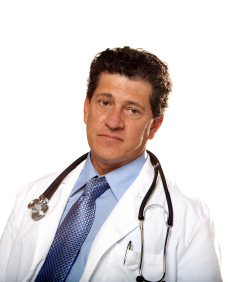Burnout Higher in Private Oncology Practices
The risk for burnout appears to rise in direct proportion to the number of hours oncologists spend on direct patient care, according to a recent survey by ASCO.
Risk factors for burnout differed between academic practice and private practice oncologists.

The risk for burnout appears to rise in direct proportion to the number of hours oncologists spend on direct patient care, according to a recent survey by the American Society of Clinical Oncology (ASCO).
While the majority of oncologists surveyed (83%) were satisfied with their career choice, 45% had at least one symptom of burnout, according to results published online Jan. 27 in the Journal of Clinical Oncology. And career satisfaction was lowest among oncologists in private practice, where physicians reported seeing nearly twice as many patients per week on average as those in academic practice.
“The strong, incremental relationship between time devoted to patient care and burnout is concerning, especially given the projected shortage in the supply of oncologists during the coming decades,” the authors wrote.
The survey revealed other differences between private and academic practices that may inform future strategies for addressing burnout. For example, compared with academic practice oncologists, private practice oncologists were more likely to work under purely incentive-based compensation models (39% private vs 3% academic) vs salary-only models (21% private vs 38% academic). In addition, 35% of private practice oncologists reported more than a 10% drop in 2012 compensation, compared with 8% of those in academic practice.
“Productivity-based compensation models designed to increase the volume of care oncologists provide are associated with higher burnout and may be self-defeating in the long run,” said the authors.
Among the 45% of respondents who had at least one symptom of burnout, assessed using the Maslach Burnout Inventory, 38% had high emotional exhaustion, 25% had high depersonalization, and 13% had a low sense of personal accomplishment. Besides time spent on patient care, factors associated with burnout included younger age, spending time on work-related tasks at home, and focusing on a specific type of cancer.
Certain risks were tied to practice setting. For example, in private practice, having children decreased the risk of burnout by 55% while being a woman increased the risk of burnout by 65% in academic practice.
“Although no difference in the overall prevalence of burnout was observed by practice setting on multivariable analysis,” the authors said, “many of the risk factors for burnout differed between academic practice and private practice oncologists, suggesting that efforts to reduce burnout will need to be tailored to practice setting.”
Burnout has “potentially profound” consequences for oncologists both personally (eg, depression and substance abuse) and professionally (impact on quality of care and professionalism), the authors said. And physicians with burnout may be more likely to reduce their work hours or seek early retirement, which has implications for the overall physician workforce.
Future research should focus on evaluating practice models, such as team-based care, and other aspects of the practice environment that may reduce burnout, the authors said. “A better understanding of the factors that sustain career satisfaction and studies testing interventions to reduce oncologist burnout are needed.”